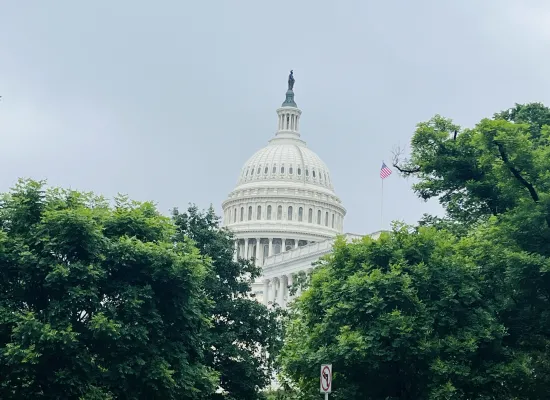
Federal Update: International Reference Pricing
In recent weeks, the Trump administration and federal lawmakers have revived proposals designed to reduce prescription drug costs by establishing a ceiling price based on the prices paid in other wealthy nations. While these proposals differ in important ways, they share the goal of reducing drug prices in the US through comparisons to other countries. International reference pricing may appeal to lawmakers and the public, given the widely reported disparity in drug prices between the US and the rest of the developed world. A report last year from the US Department of Health and Human Services (HHS) found that US prices across all drugs were about three times higher than prices across 33 comparison countries in 2022. This gap has widened as the mix of new drugs tilts toward specialty medications that carry larger price tags. The US pays a significant premium for innovation—consumers paid over four times more for brand medications in 2022, whereas unbranded generics were available in the US for lower prices than in comparator countries. One limitation in comparative analyses of prescription drug costs is the lack of public data on rebates in other countries. The estimated net price of brand medications in the US was still over three times more expensive than the products’ list price in comparator countries.
Most Favored Nation Ceiling Price in Medicaid
President Trump has long supported reference pricing, claiming that lower drug costs in the European Union and other developed countries are a sign that the US is getting a bad deal. For instance, Trump called on Congress to pass legislation addressing “the problem of global freeloading” in his 2019 State of the Union. In the final months of his first term, the Center for Medicare and Medicaid Innovation (CMMI) finalized plans to establish a Most Favored Nation (MFN) Model. The MFN Model would have tied Medicare Part B payments for the program’s 50 highest-spend drugs and biologics to the lowest per capita price paid by any non-US member of the Organization for Economic Co-operation and Development (OECD) with a Gross Domestic Product (GDP) per capita that is at least 60% of the US GDP per capita, adjusted by each country’s GDP. The MFN Model also called for adjusting add-on payments to reduce financial incentives to prescribe higher-cost drugs and reducing beneficiary cost-sharing on MFN Model drugs. A federal court issued a temporary injunction blocking the model from taking effect in December 2020. The Biden administration later rescinded the MFN Model in 2021, citing concerns about patient access to drugs that would have been on the reference pricing list under Medicare Part B and the measure's impact on drug prices in the US and internationally.
MFN was conspicuously absent from a recent executive order that proposed a dozen initiatives to lower prescription drug costs. While it appears unlikely that the president will implement reference pricing through executive action, the topic recently resurfaced as Congress considers nearly $1.5 trillion in offsets to help pay for President Trump’s tax, border, and defense priorities through budget reconciliation. At least a dozen moderate House Republicans have expressed concerns about proposals that would cut federal Medicaid assistance due to the impacts on beneficiaries and safety net providers. On April 30, it was reported that the White House requested proposals to implement an MFN system to reduce Medicaid spending on prescription drugs (Medicaid MFN). The White House has pitched Medicaid MFN as a way to reduce federal medical assistance spending without directly impacting beneficiaries. The Medicaid MFN proposal is light on details, and there are several factors that may limit its budgetary impact:
• Which products will be eligible for MFN? CMMI’s MFN Model was limited to 50 of the highest-spend drugs in Medicare Part B. More clarity is needed on whether the Medicaid proposal would apply to inpatient or outpatient drugs, and whether it would be limited based on metrics like a product’s share of overall drug spending in the Medicaid program.
• Which countries will be used as comparators? The MFN Model applied to OECD countries with a GDP per capita of at least 60% of the US GDP per capita. While this is a straightforward metric, other measures may better identify nations with economies or healthcare systems that more closely match the US. For instance, should we care about what Luxembourgers pay for their medications?
• How does this interact with the Medicaid Drug Rebate Program? States are already offered the lowest prices in the country for covered outpatient drugs due to the Medicaid Drug Rebate Program. Would Medicaid MFN replace the current rebate system with one where Medicaid pays lower upfront costs? With fewer rebate dollars, how will states offset costs in the rest of their Medicaid programs?
• How will the MFP interact with the 340B program? Like the Medicaid Drug Rebate Program, 340B covered entities are entitled to discounts on covered drugs. Under the program, manufacturers of brand medications must offer larger discounts, known as sub-ceiling prices, if the manufacturer’s best price for a drug is lower than its Average Manufacturer Price (AMP) minus 23.1%. Given the disparity between brand medication prices in the US and comparator countries, it’s reasonable to assume that brand manufacturers will be required to offer significant discounts to Medicaid. Will Congress carve out MFN prices from the calculation of 340B discounts?
AMCP is monitoring negotiations in the House over Medicaid offsets and will provide more details if the administration’s MFP proposal gains traction.
International Reference Pricing Legislation
On May 5, Senators Josh Hawley (R-MO) and Peter Welch (D-VT) reintroduced the Fair Prescription Drug Prices for Americans Act. Below is a summary of the bill’s components:
1. Applicability: The bill applies to all brand drugs and biologics sold in the US rather than Medicaid drugs. Generic drugs and biosimilars would be exempt from reference pricing, likely in recognition of the fact that the US pays less for generic products than some peer nations. The bill would likely not meet the Senate’s rules for reconciliation because the policy impacts the commercial market in addition to Medicare, Medicaid, and other government programs.
2. Retail list price ceiling: The bill caps the retail list prices that manufacturers can charge in the US at an average of the retail list price for the drug or biologic across all comparator countries. The bill does not directly impact net prices or patients’ out-of-pocket spending.
3. Comparator countries: The bill specifies that HHS shall annually calculate the average retail list price for each drug and biological product sold in Canada, France, Germany, Italy, Japan, and the United Kingdom. HHS may use sales data reported by manufacturers as required in the bill, as well as any public filings from manufacturers in the six countries.
4. Data collection: Drug manufacturers must annually submit data to HHS for each applicable drug or biological product, including the list price for the product sold in the US and the list price for the product sold in Canada, France, Germany, Italy, Japan, and the United Kingdom.
5. Civil Penalties: Drug manufacturers shall be subject to a civil monetary penalty if HHS finds that it overcharged for an eligible drug. The penalty will be equal to 10 times the difference between the list charge in the US and the average list price, for each unit sold.
Featured News & Resources
See Full CalendarAMCP Southwest Day of Education
Award Applications Open
Upcoming Events
AMCP offers a wide variety of educational opportunities, from events and webinars to online training.







